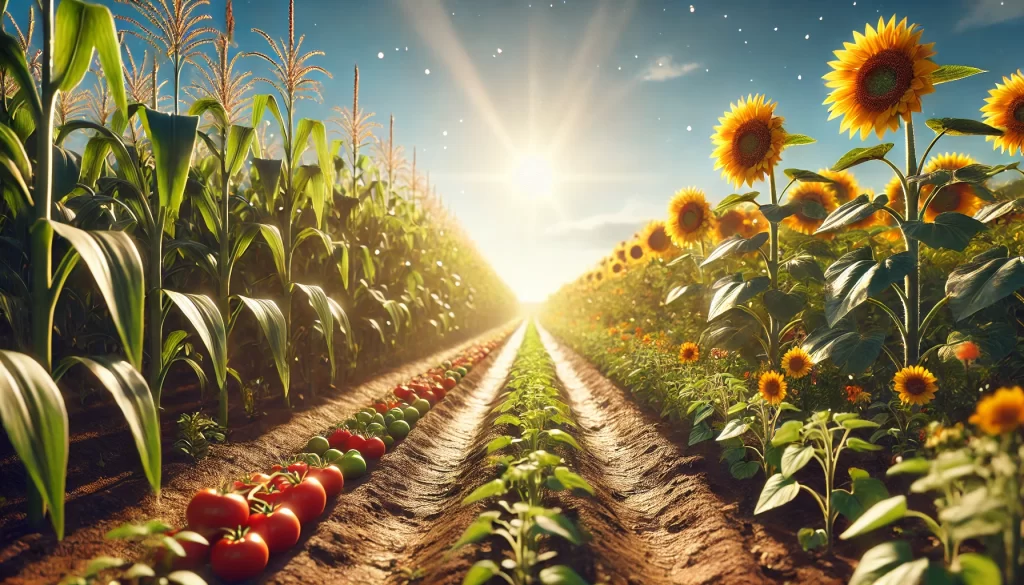The Seasons and Their Role in Agriculture (Part 2: Summer)
Summer is one of the seasons that presents the greatest challenges for farmers, as it is characterized by high temperatures and, in many regions, water scarcity. The extreme conditions can affect the health of crops and reduce their productivity. In this second part, we will explore how summer influences agriculture and what strategies can be implemented to take advantage of the season’s benefits and minimize its negative effects.

Summer: Challenges and Opportunities for the Farmer
Summer brings high levels of solar radiation, elevated temperatures, and, in certain areas, prolonged droughts. While these conditions can be unfavorable for some crops, they also offer advantages for others, such as the growth of tropical fruits and heat-resistant crops.
Climatic Features of Summer
- Temperature: High, often exceeding 30°C.
- Precipitation: Variable; some regions experience rainfall, while others suffer from drought.
- Sunlight: Abundant, essential for the development of photosynthetically efficient crops.

Recommended Crops for Summer
In summer, it is recommended to plant crops adapted to high temperatures and those that require less water. Below are some crops that tend to adapt well to this season:
Vegetables
- Tomato
- Pepper
- Zucchini
- Cucumber
Fruits
Cereals
- Corn
- Sorghum
These crops are characterized by their tolerance to high temperatures and can yield good results with proper irrigation management.

Fertilization Practices in Summer
The summer heat and rainfall in some regions can affect nutrient availability. It is essential to apply fertilizers that help crops resist water and climate stress. Below is a table with fertilization recommendations for some summer crops:
| Crop | Main Nutrient | Recommended Dose | Application Method |
|---|---|---|---|
| Tomato | Potassium and Calcium | 80 kg/ha | Applied during flowering and fruiting |
| Melon | Nitrogen and Potassium | 70 kg/ha | Applied during growth stages |
| Corn | Phosphorus | 60 kg/ha | Incorporated into the soil |
| Zucchini | Nitrogen | 50 kg/ha | Applied in the furrow |
| Pepper | Potassium | 65 kg/ha | Applied during flowering |
Irrigation Strategies in Summer
During summer, irrigation is crucial due to the high evaporation rate and the needs of crops. Some effective strategies to optimize irrigation include:
- Drip irrigation: Minimizes water loss and allows localized application.
- Mulching: Helps conserve soil moisture and reduces temperature.
- Night or early morning watering: Reduces evaporation and allows better water use.
Protection Against Thermal Stress
High temperatures can cause thermal stress in crops, affecting their growth and development. Implementing techniques such as shading with mesh, crop rotation, and using heat-resistant varieties can help reduce the effects of extreme weather.
Pest and Disease Control
Summer is prone to the development of pests and diseases due to the heat and humidity in some regions. Farmers must intensify pest monitoring and control through practices such as crop rotation, biological control, and frequent crop monitoring.
Conclusion
Summer presents challenges, but also opportunities for farmers who adapt to its extreme conditions. With the right crop selection, strategic fertilization, and efficient irrigation practices, sustainable and profitable production can be maintained throughout this season.
 AgronoBlog – Agriculture Blog
AgronoBlog – Agriculture Blog